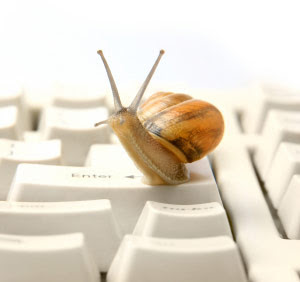 |
Windows PCs don’t have to slow down over time. Whether your PC has gradually become slower or it suddenly ground to a halt a few minutes ago, there could be quite a few reasons for that slowness. As with all PC issues, don’t be afraid to give your computer a reboot if something’s not working properly. This can fix quite a few problems and is faster than attempting to manually troubleshoot and fix the problem yourself.
One of the most common reasons for a slow computer are programs running in the background. Remove or disable any TSRs and startup programs that automatically start each time the computer boots. To see what programs are running in the background and how much memory and CPU they are using, open Task Manager. If you are running Windows 7 or higher, run Resmon to get a better understanding of how your computer resources are used. If you have an antivirus scanner on the computer, spyware protection program, or another security utility, make sure it is not scanning your computer in the background. If a scan is in progress, it will decrease the overall performance of your computer. If this is the case, allow the scan to complete, and the computer's performance should improve.
 |
| Temp Directory |
As computer runs programs, temporary files are stored on the hard drive. Deleting these temp files can help improve computer performance. First, we suggest using the Windows Disk Cleanup utility to delete temporary files and other files no longer needed on the computer. Unfortunately, the Disk Cleanup may not delete every file in the temp directory. Therefore, we also suggest deleting temporary files manually. To do this, open the Start menu and type %temp% in the Search field. In Windows OS, click the Run option in the Start menu and enter %temp% in the Run field. Press Enter and a Temp folder should open. You can delete all files found in this folder and, if any files are in use and cannot be deleted, they can be skipped, why because in background that file will be in use or some process might be using that file.
Another simple way is delete unwanted data from desktop, documents, My Picture files, downloads folders and start up programs because the OS will be loading the profile and start up programs first. This might also be one of the program. Periodic cleaning of Recycle bin also sometimes will make the system slow. In other words saying to free up the HDD space that's all...
If bad, corrupted or not fragmented HDD is also a great factor for System slowness for that we can use some windows in-built tool Scankdisk, chkdsk
or something equivalent to verify there is nothing physically wrong with the computer's hard drive. Run Defrag to help ensure that data is arranged in the best possible order. Use other software tools to test the hard drive for any errors by looking at the SMART of the drive.
Scan for virus, malware and use some updated anti-virus to detect issues.
use Kaspersky, Trend micro, Malwarebytes and try using windows in-built anti-virus named windows defender. If that windows defender is up-to-date that it is more than enough to identify this virus, spyware, malware & etc.Verify that the Device Manager has no conflicts. If any exist, resolve these issues as they could be the cause of your problem.
Update windows, drivers, run a registry cleaner and restart the system and check, maximum this will take all the issues. We are not giving 100 % guarantee that these all ways might give you 100 % result, Some might work and sometimes with the first system might start working fine so use all and check and let me know in the comment section. Upgrading the memory i.e upgrading the RAM & HDD to SSD, that may solve the issue and regarding this we have already discussed. If anyone want to avail our service we can check the system and we will help on the same. Let us know if anyone wants our peek into the issue your system and you are facing through the system.
Thanks in advance for availing our services and be the first person to say the everything about our service.
Comments
Post a Comment
Please do not use any spam link in the comment box